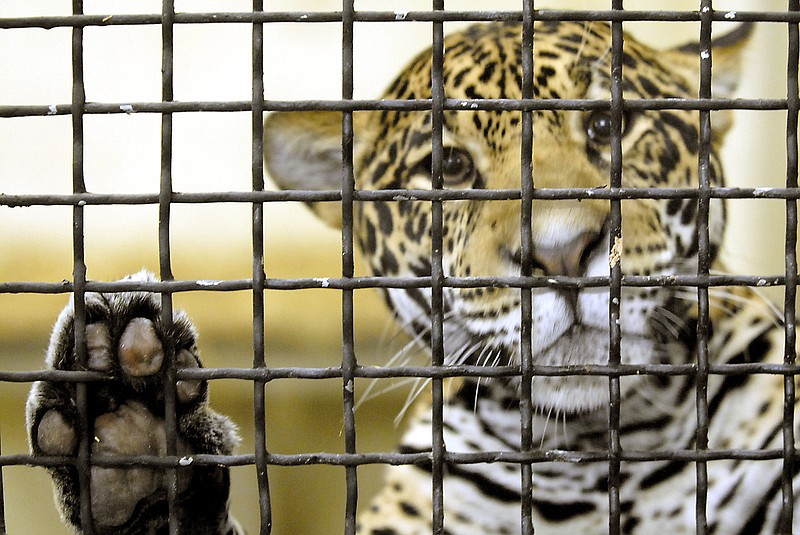Nearly a year ago the Chattanooga Zoo announced it was searching for two jaguars for its renovated exhibit and interpretive center. In just over a month, the public will be able to see the pair of Argentine cats.
The zoo welcomed brothers Phil and Gene in November. Since then, the year-old felines have been undergoing a "rigorous training schedule," said Chattanooga Zoo business manager Anna Deason.
"They're huge. They're really pretty," Ms. Deason said. "They're animals that are held in such high regard in Argentina that it's hard to get them out."
Last year zoo officials planned to acquire two jaguars from the Argentinian government, but delays in paperwork and an inability to prove the animals' genetic backgrounds prompted the zoo to look elsewhere, said Executive Director Darde Long.
Phil and Gene came to Chattanooga from the Brevard Zoo in Melbourne, Fla., where they had been part of a breeding program.
"This was a better choice for us right now, but we're still working with Argentina to hopefully still get a female," Ms. Long said. "We just don't have a timeline on it yet."
After the deaths of the zoo's longtime jaguars, Sasha and Pasha, it was time for some youngsters to liven up the atmosphere, Ms. Long said. Pasha, the zoo's male jaguar, died in 2007 of old age, and his female counterpart, Sasha, died of breast cancer last year, she said.
"The nice thing is that we had older animals for so long and now we have these youngsters who are just so exuberant and full of energy and ready to just get into any and everything," Ms. Long said. "We can't wait to get them out on exhibit."
Weighing in at about 140 pounds each, Phil and Gene are difficult to tell apart, but there are differences.
Phil is the shy, laid-back jaguar, with two perfect V's on his forehead, said zookeeper Deborah Bond. Gene, in contrast, is outgoing, inquisitive and has broken-up spots on his forehead, she said.
The brothers will be housed in the renovated jaguar exhibit with expanded grounds and new landscaping.
Inside the exhibit's interpretive center is an enclosed area with large windows for an up-close look at the fierce felines.
Now, the windows are covered with a sign that states, "They're coming."
But on March 27, the sign will come down and Phil and Gene will be on display for the public during an "all-day family celebration," Ms. Deason said.
What sets jaguars apart from many other wild cats is their tremendous jaw pressure, according to Ms. Bond.
The only other animals that rival the jaguar's jaw strength are hyenas and sharks, she said.
CAT FACTS:* Weighing between 100 and 250 pounds, jaguars are the largest of South America's big cats.* On average, they live 12 to 15 years.* Unlike many other large cats, jaguars are adept swimmers and don't shy away from the water.* Their protection status is "near threatened."Source: National Geographic Web site
Jaguars are also somewhat difficult to train, she said. Phil and Gene received some training at their previous zoo and are continuing to be taught how to do things such as put their tails through the mesh fence for an easy way to draw blood.
"They don't let us touch them or anything like that," said Ms. Bond, who has been a zookeeper for seven years. "They're pretty much wild. We can't really get too hands-on with them."
With these animals comes the need for extra safety precautions, Ms. Deason said.
The zoo has been dedicated to ensuring the exhibit meets the most up-to-date standards, "because we do want our animals to be safe, but we also want our visitors to be safe," she said.


